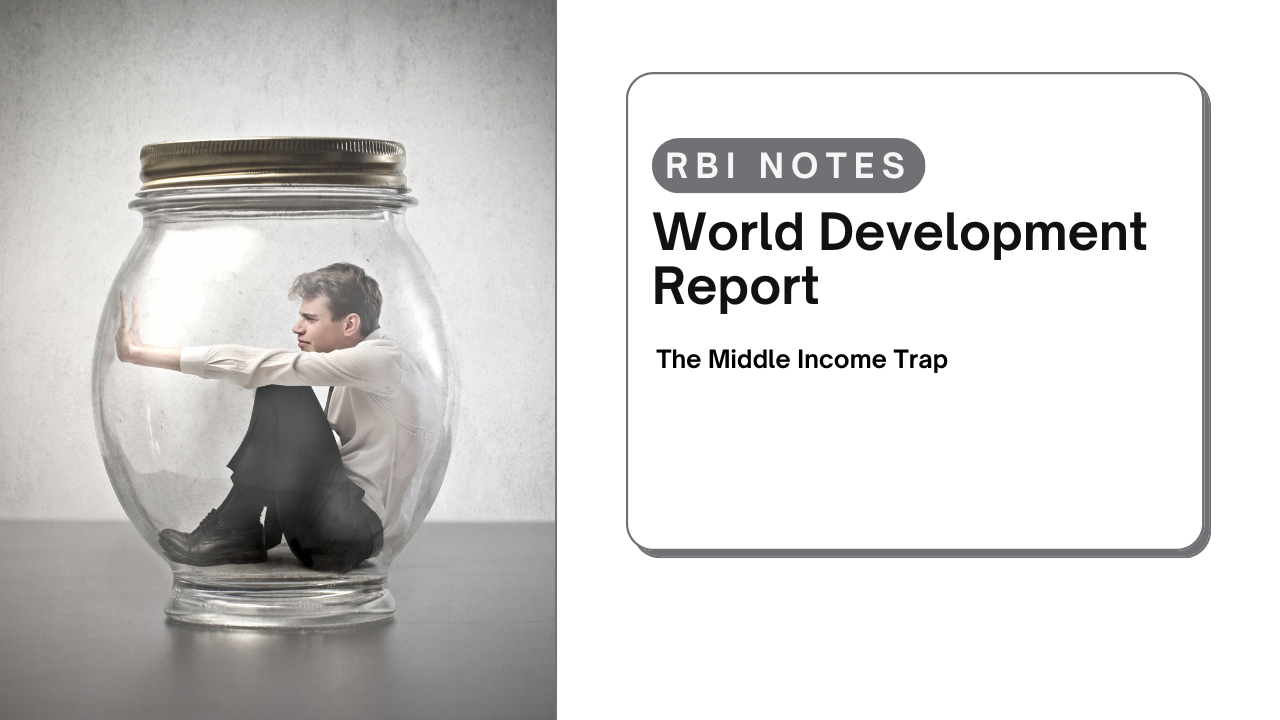Middle Income Trap
The World Development Report 2024 by the World Bank has highlighted the significant challenges that over 100 countries, including India and China, face in their quest to escape the “middle-income trap.” This trap occurs when countries, after reaching a middle-income status, struggle to transition to high-income levels. The report emphasizes that while India is the fastest-growing major economy, it could take up to 75 years for its per capita income to reach just a quarter of the U.S. income levels if current trends continue.
The report also references Prime Minister Narendra Modi’s vision of transforming India into a developed economy by 2047, marking the centennial of independence. However, the World Bank cautions that achieving this goal within the next few decades would require a “miracle,” given the historical trend where only 34 middle-income economies have managed to transition to high-income status since 1990, often due to special circumstances like European Union integration or newly discovered natural resources.
Global Economic Impact
Middle-income countries, which account for 75% of the global population and generate over 40% of global GDP, play a crucial role in global economic prosperity. The success or failure of these nations in overcoming the middle-income trap will significantly impact global economic dynamics.
Per Capita Income Disparity
The report provides a sobering comparison, indicating that at current growth rates, it will take China over 10 years, Indonesia nearly 70 years, and India 75 years to reach a quarter of the U.S. income per capita. This highlights the enormous challenge these countries face in closing the income gap with high-income nations.
Challenges and Risks
Countries like China, India, Brazil, and South Africa face numerous obstacles in their journey towards high-income status. These include rapidly aging populations, rising debt levels, geopolitical tensions, and environmental challenges. The World Bank notes that many of these countries continue to rely on outdated economic strategies that focus heavily on investment, akin to “driving a car just in first gear and trying to make it go faster.” This approach, if continued, could prevent them from achieving reasonably prosperous societies by the middle of this century.
Strategic Recommendations
To escape the middle-income trap, the World Bank suggests a fresh approach, advocating for a “3i Strategy”:
- Investment: Initially focusing on building physical capital and infrastructure.
- Infusion: Integrating new technologies from abroad to boost productivity.
- Innovation: Developing a balanced strategy that includes investment, technological infusion, and fostering homegrown innovation.
South Korea is cited as a successful example of this strategy, having transitioned from a per capita income of USD 1,200 in 1960 to USD 33,000 by 2023 through a sequential adoption of the 3i strategy.
Policy Recommendations for India
For India to avoid the middle-income trap and achieve its goal of becoming a developed nation by 2047, the report recommends:
- Addressing Income Inequality: Implementing policies to reduce inequality and promote inclusive growth.
- Enhancing Economic Diversification: Expanding beyond traditional sectors and investing in emerging industries.
- Increasing Productivity and Innovation: Focusing on research, development, and education to enhance productivity.
- Supporting Local Manufacturing: Encouraging local production through targeted policies and incentives.
- Promoting Sustainable Development: Aligning economic growth with environmental sustainability goals.
Conclusion
The World Development Report 2024 paints a challenging picture for middle-income countries, including India. The path to high-income status is fraught with obstacles, and current strategies may not be sufficient to overcome them. A comprehensive and innovative approach is required to avoid the middle-income trap and achieve sustainable economic growth in the coming decades. The report’s insights underscore the need for these nations to rethink their development strategies to ensure long-term prosperity and stability.


